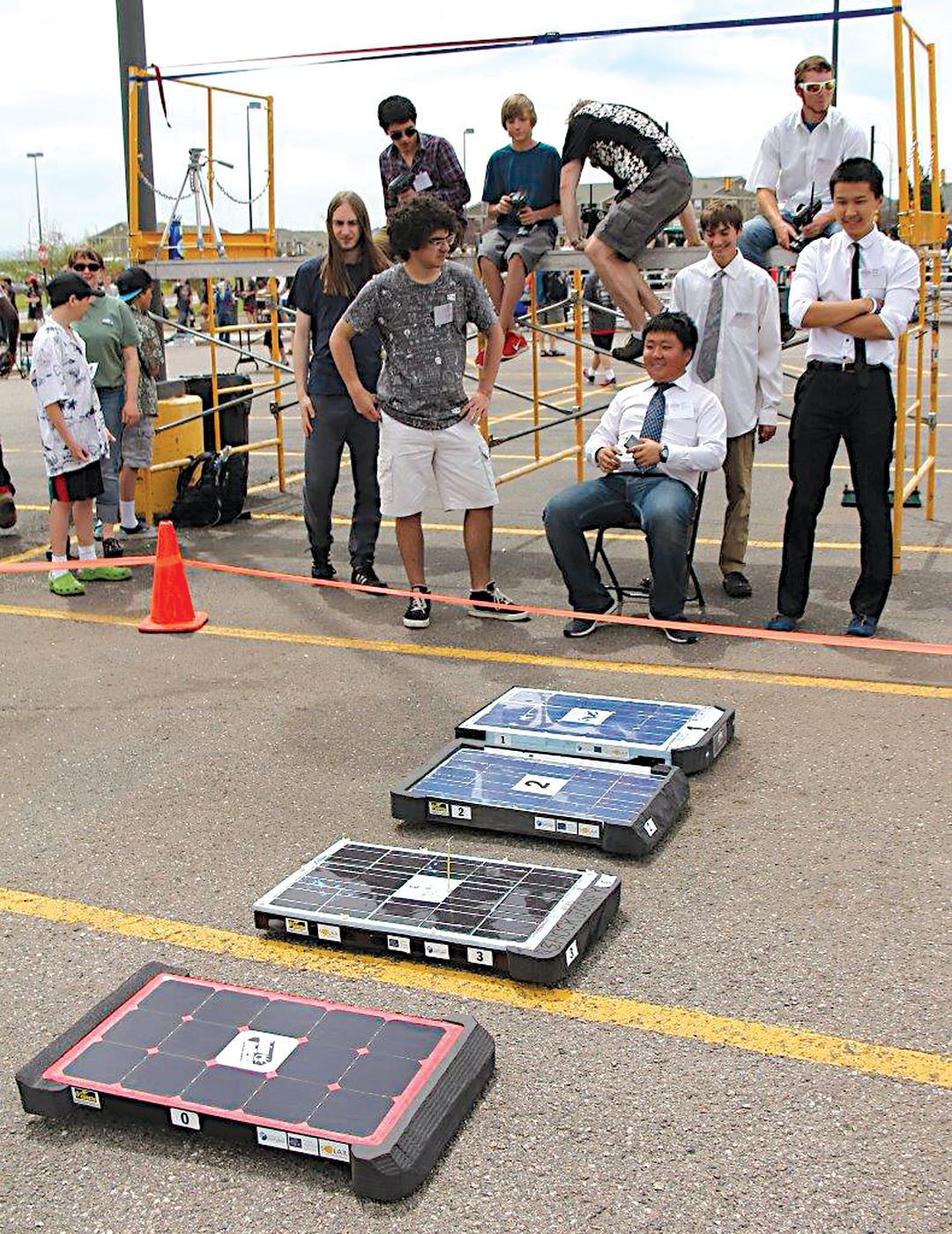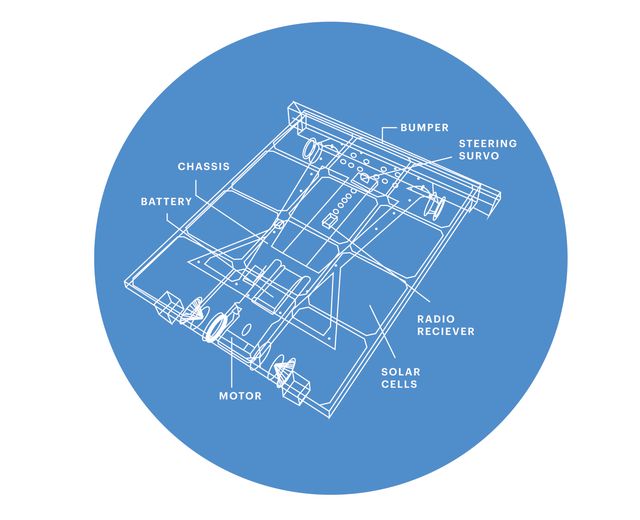These Super Green Students are Building and Racing Clean-Energy Cars

RC cars designed by Solar Rollers students.
Image: Solar Rollers
Google “solar car,” and the images that pop up look like something out of a sci-fi flick. But Carbondale-based Solar Rollers, which sponsors a program for teens to design, build, and race remote-control solar vehicles, hopes clean-energy cars will actually hit the streets soon—possibly even designed by pros who got their start in the program.
“It was founded in response to teachers expressing interest in clean energy but not feeling prepared enough to teach it,” says Noah Davis, founder and executive director of the nonprofit and a former teacher himself. “Typically, teachers are learning right alongside the students.”
Now in its fourth year, this after-school program fills a gap in STEM (science, technology, engineering, and math) programming. Eight high schools, stretching from Summit County to Aspen, currently participate. Solar Rollers provides materials to students, who work in small teams and have a spring semester to build their cars, which average 2 feet–by–3 feet in size and have internal parts that are a tenth the scale of those in typical street-legal vehicles. Teams then compete in a championship that includes six challenges, ranging from an oral exam to circuit races in which cars hit speeds of up to 60 miles per hour. An online curriculum helps teachers guide students as well as develop a more enduring understanding of clean energy themselves.

Although the premise is similar to the nationwide FIRST LEGO League robotics program, Solar Rollers focuses strictly on the energy management of the cars’ closed system and affords a greater degree of freedom in students’ designs. The young engineers not only decide what voltage their cars need to run but also design the circuit, mechanicals, and chassis.
“We’re not providing a kit you can just bolt together,” Davis says. “It’s all about creativity. We provide the raw materials, and by that I mean a big sheet of carbon-fiber board. It’s up to students to figure out how to use it.”
While the impetus behind the program is clean-energy education, students also get to practice interpersonal skills like teamwork, leadership, perseverance, and creative problem-solving. Davis mentions a recent graduate who was unusually quiet and socially immature when he entered the program. But when the other students realized how much he knew about solar energy, they quickly voted him team leader. “He had to start talking,” notes Davis. “Over the season, his voice got more confident, and he completely changed. He’s gone on to work as a full-time technical support technician who deals with people all day long.”
The program recently got a prominent platform when it hosted a race for a dozen Colorado high school teams at the Denver Museum of Nature and Science in mid-May. Already, schools in Silicon Valley and Wisconsin have expressed interest in Solar Rollers. Now that the program’s structure and teacher-training tools are in place, Davis plans to expand its reach, with an eye toward promoting energy efficiency in multiple ways.
“With the way technology is moving, what they’re studying in the car is a small-scale version of what they’ll have in cars and houses in the future—and an example of the decisions they’ll have to make about energy use,” he says. “I like to say that I’m too old to fix anything, but young people get fired up. They can do anything.” solarrollers.org













































